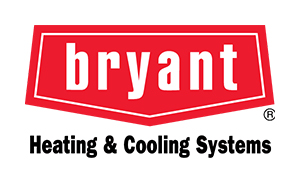The Texas heat doesn’t just test your patience; it tests your plumbing, too. Outdoor lines, spigots, irrigation systems, and hose bibs all take a beating under long stretches of soaring heat and sun. If you don’t check them now, you could be stuck with leaks, pressure issues, or worse when summer hits full swing. Honest Home Services LLC‘s plumbing services help homeowners in the Flower Mound, TX area get ahead of the damage before the heat does its work.
If your property hasn’t had a plumbing check-up in a while, now’s the time to take it seriously.
Why Direct Sun and Long Dry Spells Create Problems
Hot weather hits Texas hard, and outdoor plumbing feels that pressure early in the season. The parts of your plumbing that stay outside, like hose bibs, irrigation lines, and exposed pipes, aren’t built to take endless heat without some wear.
While they’re made to be tough, repeated exposure to sunlight and dry soil pulls moisture away and puts stress on the seals, joints, and gaskets that keep things watertight. Rubber washers crack, and threads warp. Metal fittings expand and shift out of alignment.
If you haven’t looked at your outdoor plumbing since winter, now’s the time. That quiet drip at the back of the house or the low pressure at your garden hose might not seem like a big deal, but those signs build toward bigger problems when the heat intensifies. The sun dries up the soil around buried pipes, which causes movement that creates tiny shifts in the system that go unnoticed until something gives. Water waste and damage follow close behind.
Check for Early Signs of Warped or Cracked Fixtures
Plastic components don’t age well in extreme heat. If your hose connectors or sprinkler heads sit exposed, the material might feel brittle when you twist them. That stiffness is your warning sign. A connection that held up fine last year might snap under normal pressure this year. Older fixtures that have faded in the sun or discolored along the edges are likely to fail sooner than you expect.
Start by testing each hose bib. Turn the water on slowly and watch what happens. If water sprays from the base, you may have a cracked valve or a loose fitting. If the handle sticks or squeaks, the internal parts might be expanding unevenly. These aren’t cosmetic problems. They affect water flow and can create leaks that stay hidden until you notice a jump in your water bill.
Sprinkler heads deserve the same check. Walk the yard during a test run and watch how each one pops up and retracts. If one stays stuck or leaks between cycles, it might have warped from sun exposure. Replacing that piece early gives your irrigation system a smoother run when it starts working daily.
Watch for Pressure Changes in Outdoor Lines
Outdoor plumbing systems work under different conditions from indoor ones. Temperature swings, soil shifts, and even wind exposure play a role. When pressure drops in an outdoor faucet or sprinkler zone, it might point to a blockage, a shifted underground pipe, or a weakened connection at the valve.
Test the faucet without the hose connected if the hose is suddenly spraying weak or uneven streams. If the pressure seems normal, the problem might lie in the hose itself, but if the stream comes out weak directly from the bib, that pressure loss needs more attention. You could have sediment in the line, a half-clogged valve, or early signs of corrosion inside the pipe.
In irrigation systems, zones that once sprayed evenly might start to sputter. That drop can happen when mineral buildup slows the flow or when a small crack in the line leaks water underground. You won’t always see the water surface, especially if the soil is already dry. But the zone will run longer to make up the gap, which adds unnecessary strain and increases your bill.
Test Your Shut-Offs Before You Need Them
Every outdoor plumbing line connects to a shut-off somewhere, and in many homes, those shut-offs don’t get much use until something breaks. If you try to turn off the water during a leak and the valve sticks, spins loosely, or leaks, you’re now juggling two problems instead of one.
Test your shut-off valves while everything is dry and working. Slowly close each one, wait a moment, and reopen it. Watch the connected line and listen for any strange noises. If the valve squeals or fails to close completely, it might be time to replace it. Gate valves, in particular, tend to fail after sitting idle for too long. Their handles may turn freely even when the valve itself stays stuck.
Ball valves handle outdoor conditions better, but they still wear down. If your valve handle doesn’t move easily or if you see rust around the stem, treat that as a warning. Replacing the valve now takes a few minutes. Replacing it during a rush or emergency takes more time and adds stress to an already urgent situation.
Irrigation Timing and Leak Detection
Automated sprinklers are helpful in the heat, but they only work as well as the system that feeds them. You might not know a zone is leaking underground or a timer is malfunctioning until you see wilted grass or a soggy spot.
Check your irrigation schedule as the season changes. Make sure each zone runs at the right time and for the right period. Avoid running all zones at once and during the hottest part of the day. Early morning or late evening allows water to soak in without as much evaporation.
While testing, walk the full line of each zone. Soft patches of soil or spots that stay darker than the rest of the lawn point to slow leaks. If your controller tracks usage, take a look at trends. A sudden jump without visible water could mean an underground split. Catching it early makes repair simpler and protects your yard from deep-rooted damage.
Protect Hose Bibs and Exposed Pipes
The direct sun wears out hose bibs faster than most people realize. The constant exposure bakes the washers and stretches the threads. If you attach a timer or Y-splitter to your hose bib, that added weight and pull increases stress even more. The valve connection can loosen, leak, or break, leaving you with a slow drip that adds up throughout the season.
Use insulated covers or shade barriers to block direct sunlight where you can. These don’t have to be permanent fixtures. Even a small awning or cover that blocks the midday sun gives the fixture more time before it breaks down. If your hose bib connects to a PVC pipe, that pipe may also need protection. White PVC expands in heat, and repeated cycles of expansion and contraction can crack joints at stress points. Replace worn gaskets and cracked washers before the season heats up.
Check for Changes in Water Quality
Heat affects pressure and hardware and can also stir up sediment, especially if your system pulls from a well or uses older piping. Sediment buildup can clog nozzles, jam valve seals, and wear down gaskets inside your sprinkler heads.
Run each faucet and zone long enough to get a full flush. Watch for discolored water, unusual smells, or visible grit. If you see anything off, flush the line and clean the screens or filters connected to your outdoor equipment. A single flush often clears minor buildup, but if it keeps happening, you may need to check the supply line for rust or scale. For persistent water quality issues, a whole-house water treatment system provides added peace of mind and can filter sediment as well as metals, bacteria, and other contaminants.
Call Us For Help with Outdoor Plumbing Now
A little prep now can save you from headaches when temperatures climb and water systems strain under demand. If you’re ready to get your outdoor plumbing set for summer, book your seasonal service with Honest Home Services LLC today. We also offer sprinkler system repairs, outdoor faucet replacements, and leak detection services to keep your exterior plumbing running smoothly through the Texas heat.



